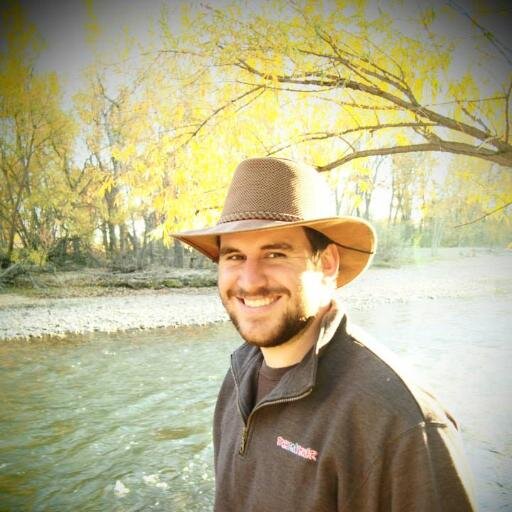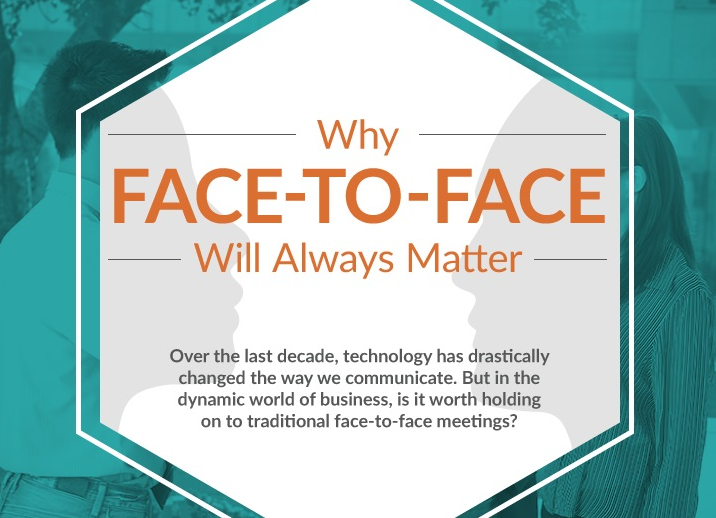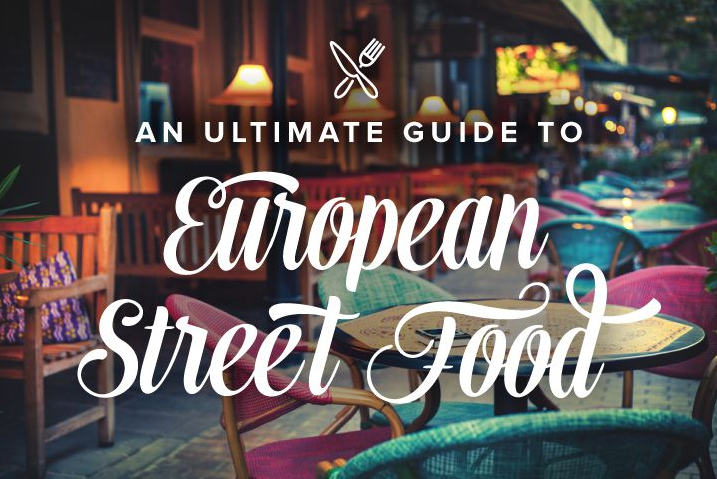Editor's Note: We've since published a 2015 version. Check it out here!
Welcome to Linkarati. It's officially been one full year since our launch!
I wanted to take a moment to personally thank everyone who's ever interacted, contributed, left a comment, or even simply read Linkarati's content. As an SEO agency, investing into building a community is no small task, and even the most patient and invested of leadership needs to see returns eventually. Everyone who spends time helping build our community, in each and every way, has been a part of that return.
We're so grateful for each and every one of you.
So this is our second annual edition of our Link Building Success Stories post. Last year we were lucky enough to have 50 experts share their stories. This last year - 2014 - has been yet another turbulent year in the SEO/link building industry. Matt Cutts kicked it off with a bang when he publicly called for an end to guest blogging (yet it hasn't gone away).
The community remains strong. We continue to share knowledge, information, and experiences. Link building is still important, and there's a right way to go about it.
I want to thank each and every person featured here for being generous with their time and experience. We were once again floored at such an outpouring of response from the link building community. Thank you for sharing your stories.
(To hell with the contributor list, just get me to the post!)
Contributors
- Kyle Sanders
- Steve Morgan
- Dave Snyder
- Chris Dyson
- Garrett French
- Joel Chudleigh
- Tom Demers
- Ken Lyons
- Dan Petrovic
- Max Prokell
- Ross Hudgens
- Patrick Hathaway
- Takeshi Young
- Simon Penson
- Giuseppe Pastore
- Paul Teitelman
- Venchito Tampon
- Matthew Green
- Thomas McMahon
- Lewis Sellers
- Greg Shuey
- Peter Attia
- Danny Ashton
- Gisele Navarro
- Cody Cahill
- Peter van der Graaf
- Casie Gillette
- Nate Dame
- Benjamin Beck
- Philip Petrescu
- Annalisa Hillard
- Jeriann Watkins
- Wayne Barker
- Tad Chef
- Paul Shapiro
- Emma North
- James Norquay
- Zac Johnson
- Melanie Nathan
- David Leonhardt
- Mike Ramsey
- Mark Webster
- Erin Everhart
- Ann Smarty
- Jo Turnbull
- Tyler Tafelsky
- Wojtek Mazur
- Jennifer Van Iderstyne
- Neil Patel
- Gerald Weber
What's a successful link building story you can share from 2014?
We performed an SEO audit for a publicly traded company that was struggling with panda, architecture, and link equity issues. After initial on-site cleanup and tweaking, we used ahrefs broken links checker (which had just launched in Oct.) for the first time and found over *500* broken links, including droves from .edu links. Naturally, we 301’d all of those to corresponding pages, sans the crème de la crème which were redirected to high priority pages that weren’t too much of a stretch or mismatch.
They’d also created an infographic that’d earned several hundred links or so via embeds, but the bounce rate on the source IG page was around 90%. We redirected the IG page to a target category page that was 30% ecom and 70% informational in terms of page layout, added the top tenth of the inforgraphic to the content and when clicked on, generated an overlay of the IG in full for users.
Good news? This link work alone boosted traffic by ~30%, which is about 8k unique visits per month and the increase in eyeballs has been yielding a steady flow of fresh links to some of their new product releases, all of which are ranking for desired keywords
When I do link building work for clients, I try to encourage them to get involved and to do as much as they can themselves – especially if it ties in with what they’re already doing, or enjoy doing. Often this never happens, as they’re too busy or uninterested – but for one project, it worked beautifully…
I had a client last year who sold a particular type of woodwind instrument – a father-and-son business. The son is a passionate musician and liked to offer advice and help on music forums. As many SEOs will know, a lot of forums implement rel=”nofollow” on their outbound links and therefore contributing on them is not very viable as an SEO tactic, however for some reason, I found that a lot of the music forums that he was already contributing on and/or others where he could’ve been did not implement it, so they were all dofollow.
In some cases, he hadn’t added a link to his signature or profile. In others, he needed to use BB code or HTML code to get them to work, so I wrote him a guide on how to implement these types of links. In cases where he’d left lots of posts but hadn’t previously posted a link, they suddenly saw a jump of dozens of links on a fair few root domains.
In addition to other tactics and work (e.g. on-site work), they started to dominate the industry in organic search, appearing in positions 1-3 for most buying-related terms, and they saw a major jump in enquiries and sales as a result.
I really enjoyed it as it was good to see a client learning how to do link building themselves, so that they could carry it on without my involvement. In fact, I no longer provide SEO for them – mainly because they’re happy to maintain it themselves on an on-going basis. While this would be a shame for some SEOs (a paying client calling it a day), I was chuffed, as it’d shown that my consulting had worked and we left things on very good terms. It left me with a warm feeling inside, saying “my work here is done” while I rode off into the sunset…
In 2014, we started experimenting with link building that wasn’t about links. When guestpostacolypse happened the space drastically changed, and it became clear in 2014 that link building for purely link building purposes was dying.
First we looked at the signals Google was now using to grade links as negative:
- Incorrect contextual placement
- Anchor text saturation
- A post from an author a single time on a site
- No traffic through the link
So the positive points of links going forward are going to be the opposite:
- Correct contextual placement
- Natural link placement
- Creating relationships with writers not websites (CopyPress has 14,000)
- Create content and links that generate traffic.
Guest posting didn’t create great traffic generation by design. Not only poor link placement, but also the intent was simply off.
So here is one of the strategies we began to utilize:
1) We began creating relationships with authors
- We found lists of authors, crawled them for data points, including their Google Authorship where we found more websites
- Created outreach programs around authors. Our pitch was simply to build a database of authors that wanted to be alerted about new content we publish. These are people looking for ideas to write about on various publications.
- We began to create interactive content for customers. The IG placement strategy, while useful, isn’t as powerful as the strategy we use because it means that the content lives on the linker’s website thus there is no reason for a person to visit the site it links to. So for our strategy we built compelling content that had to be linked to.
- We then blasted our database with an opportunity built around the content we were going to publish on the client’s website to see if any of the writers wanted more information on the topic. If they wanted to cover the topic we would provide assets if needed. This is basic PR.
Another reason I love interactive content is because it has the ability to be sliced and diced into multiple formats. Infographics and videos especially become useful assets.
Interactive content also plays well in terms of on page signals. Panda updates have shown a clear favor towards content that initiates engagement.
This strategy for us is more about traffic generation to get users on the page engaging with the content. Because of that it hits on all cylinders. In a link free world this strategy still does its job. It also does everything Google asks for. Links are only created if they are editorial votes by an author and then in most cases an approving editor.
My biggest link building success was from October 2014. I was carrying out an outreach campaign for one of our clients on the back of a piece of content Hit Reach developed for them that month which was an online app with tips to save your phone battery. I managed to secure an exclusive feature on the Daily Mail website for the client.
While many would question the quality of some of the content on that site (and the links are nofollow) it is the biggest newspaper in terms of online traffic. I have had managed to secure placements on the site in the past but this time the app was featured on their homepage from lunchtime until midnight sending over 65,000 visits to the app that day.
Due to the number of eyeballs the app received just 2 days later the CEO of the business was invited on to BBC Radio 2’s drive time show which has over 5 million listeners every night.
From a client perspective, the link we’re proudest of from 2014 came from the USDA.gov. We attribute this link to our increased efforts to integrate prospecting with quality content and high touch outreach.
Our .gov success story stems from the following efforts, which we employed for all of our clients in 2014:
1) Linkable Asset Design: We develop linkable assets to solve pains for the audience people are trying to reach with their online resources and links pages. Our goal was not to simply create content around a particular product or offering; we approached each project (including the one that received the .gov link) asking “how can we create content to help people serve their target audiences?”
- Seeing Linkers as an Audience: Linkers are like journalists; they’re an audience that also serves an audience. If we create content that also serves the audience that they serve, we can get that link.
- Finding knowledge gaps for audiences is essential to our content design, and we approach every prospecting project with one question in mind: “what information is missing?”
2) Our Evolving Outreach Methods: We work to establish credibility and create affinity with everyone we reach out to. Throughout 2014 and into this year, the Citation Labs outreach team is continually developing our communication methods to focus on helping contacts feel like they’re interacting with a friend or acquaintance; not just a marketer who wants something. Even if that contact is a government employee!
We’ve been working toward strategic content and friendly and helpful outreach since Citation Labs launched, but I think both of these goals found traction in 2014. The .gov link was one of our biggest successes, but these practices have worked to drive our 50% year over year growth. And our plan is to grow 100% in 2015!
In 2014 we started looking into larger pieces of content and their potential for generating not just links but trust and conversion improvements for our clients. We mainly work with small businesses so creating large pieces of content really requires a leap of faith on the part of the client and also a massive gamble on our part – i.e. if it does not work then it damages their business noticeably and consequently weakens our relationship with our clients.
Therefore we have not taken on these projects lightly as there is little room for error.
There are 2 projects that I can give you examples of and both have the same recipe:
1) We have a client that sells wildlife cameras and wildlife observation equipment.
As an e-commerce site we were running dry on ways to get links from trusted industry sites and came up with an idea that could potentially gain links from wildlife membership bodies and organisations, governmental organisations as well as educational institutions such as schools.
We devised and planned a game called Wildlife Trackers (https://www.flyonthewall.uk.com/wildlifetrackers/)
Initially we wanted to keep close to the core business aims of our client – i.e. create something that encourages more observation of wildlife and that makes it easier and more fun. It is a competitive market and we wanted something different. We also had highlighted from our own personal experiences that kids are getting less and less knowledgeable about their local wildlife and spending less time outdoors and that we were keen to see if we could help improve this situation.
Wildlife Trackers is a game that solves both of these problems – It is a social game for kids that is fun and that gives basic wildlife challenges that any kid in the UK can easily get involved in.
We started off by calling around 20 wildlife organisations such as bird spotting organisations and hedgehog preservation societies etc and pitching the idea to them. They all gave us great advice and helped us to cement our strategy – It actually changed our plans a fair bit so very glad that we did this.
We then planned out the design and work flows of the game and hired an offshore (i.e. pretty cheap) development team to help build to our designs and plans.
It took 6 months to build and in total took an investment of around £7000.
We determined that in order to get this investment back we would need about 100 – 200 links and of course the traffic and sales to follow.
We therefore researched about 3,000 wildlife organisations in the UK as well as sourced a database of teachers in primary schools. we carried out a series of 3 emails to all contacts and had a number of phone calls and email conversations as a result (many are still ongoing).
To this date we have gained about 50 links and had about a 25% increase in SEO traffic and sales as well as a large increase in direct traffic and sales from the organisations contacted.
The key to the success was that we stuck closely to the core aims of the business but then tied those to a cause that all link targets could identify with.
2) We also work with a very different client; a video production company that focus on getting a measurable ROI from their videos for their clients.
Many of their clients are Digital Marketers and business owners so people that we can easily relate to. We identified that market research was always a painful part of any marketing strategy and that it was often done poorly and inefficiently due to time constraints and business pressures.
Our client often asked us to help with market research for their clients as their clients needed this in order to get started with their video marketing strategy. It was a time consuming process with many repeatable tasks so we started looking for tool based solutions.
We wanted to be able to compare video marketing strategies for the clients of our client that went deep but that were also easily understandable. We started researching the YouTube API and also various social network API’s and developed a crude tool in Google Docs that used advice from the brilliant Tom Critchlow from his Distilled days on how to use the power of javascript to pull in data from API’s into Google Docs.
We got a crude tool working that we were using internally for our projects and it was saving us a lot of heavy lifting in terms of not actually having to visit countless YouTube pages and then checking numbers of tweets, google Pluses and FB shares and likes etc manually.
But – it was limited in terms of it’s power because it was in a Google Doc – we therefore decided to develop a web based tool that cut out Google docs and then convinced our client that they should make it public and stick it onto their website for all to use – even competitors.
Here is a video that gives a quick run through:
It cost about £1,500 to build in total.
We communicated the launch of the tool by emailing marketing blogs and video marketers as well as other video production companies.
Response was poor – we have now realised that many emails were hitting spam inboxes but through Twitter we got some messages out to key people and also ran a few campaigns on Linkedin in order to get the tool in front of potential customers.
So far the tool has generated 3 high value consulting jobs for our client as well as won 5 new video production contracts after pulling in clients from our outreach.
It has only generated 10 links so a bit of a failure in that respect…..But it is helping the business to grow and we are hoping that the links are just a matter of time as it is genuinely a great tool (in my objectively humble opinion of course).
We’re an agency that also runs our own content sites, so I tend to think of link building success more in terms of repeatable tactics that we can apply in a lot of different niches rather than “this one site got this one link from this one big pub” (though those are always fun and are obviously successes). One variety of content creation and promotion that’s gotten consistent traction in 2014 in terms of getting quality links has been variations of:
- Create a very meaty resource around a topic with a keyword you want to rank for that helps your prospect. I like to use boring examples so people can get an idea of how it might apply to any niche, so let’s say you sell paper. Assuming office managers buy most of the paper and are your primary target audience, you’d find a good pain point for office managers (this could be around selling paper, but because you want to link out really liberally here you might want to find something more tangential depending on the clients’ / your threshold for linking to companies that could be competitors). So we might go “up” and focus on “office supplies” or go “sideways” and focus on related items we don’t sell (like staplers or printers) and come up with a lot of ideas like:
- The single place offices waste the most money
- The biggest mistake startups make when ordering office supplies
- The best value printer / copiers for large offices
- Whatever the topics we settle on, we then make sure to include lots of links to valuable resources and try to incorporate thought leaders (sound familiar?) whenever possible. For the first two ideas we might try to get lots of answers from folks who write about logistics in the form of an original answer, or even just quoting something they’ve already written. In the case of the last idea we would just list the printers we think are really great and add in some specs and either an in-depth review or links to where readers can find those.
- Finally we let everyone who either participated in the post or was highlighted in the post know that they’ve been highlighted as the post goes live.
An important aspect of this is that we include a LOT of resources and pay a significant amount of money to a strong writer to create a very long, detailed resource in the case of the best of type lists, and again feature thought leaders (and aim for several responses) in the case of the other ideas – this means we end up with a very thick (generally ~2,500 words, sometimes longer, occasionally closer to ~1,500 words) resource that gets shared and linked to, and also matches the searchers’ intent really well when the document does rank for a particular term (if you’re looking for “best printer / copiers” a nice list of copiers with a lot of data about each is probably more what you’re looking for than a specific printer’s product page) that they can spend a lot of time on, so those assets get great engagement as well.
Our biggest link building success story last year was when we published some assets targeting regional ranking lists. These are the same lists you see shared by friends on your Facebook almost daily with superlatives like “The Safest Cities in Massachusetts” or “The Top Public Elementary Schools in Massachusetts.”
People go bananas and share these lists like crazy, since they help validate where they live, or where their kids go to school and they like to brag and gloat. By tapping into that provincialism, we were able to get some content assets to go viral and generated dozens of links from local online newspapers, local schools and local radio and television station news pages.
So my advice is, if you can add some sort of regional angle to your content, you can increase the linking potential of your assets. If you do so, make sure to reach out to local media outlets to:
- Promote the asset and pitch the regional angle
- Buy some geo-targeted ad space on Facebook to help with distribution
Some loser out there decided to blackmail us threatening to spam us with thousands of links if we don’t pay the extortion fee. Instead of complying with their request I wrote about it on my blog and it ended up receiving a huge amount of publicity. Within days we clocked up 77 awesome juicy natural inbound links, hundreds of social shares and nearly 20,000 pageviews. I’d like to use this opportunity to thank them for giving me a great story to publish on my blog.
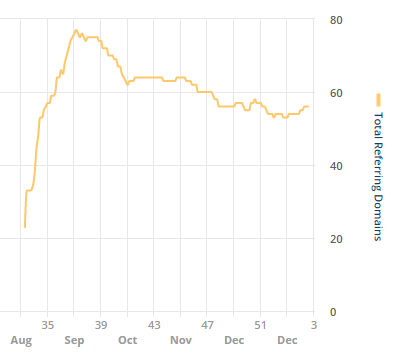
Like many others contributing to or reading this blog post, I am sure that an “Is SEO Dead?” type of article has graced your inbox a time or two. This sounds scary but not to worry. SEO is not dead. SEO is just evolving, and honestly, it is becoming more and more fun if you are willing to embrace the changes, face the challenges, and take educated risks.
The most rewarding link I built this year was built through pure PR. When we initially pitched the concept to our client, they were surprised by the amount of work we were willing to do for one link, but we pressed on, assuring them that part of our job is to spot opportunities and take action. Also, we realized that although earning a link would be great, the press and marketing opportunities that come with being published would provide the greatest benefit.
The next steps are nothing ground breaking for a seasoned marketer or PR, but I think explaining the entire process could benefit someone who is on the fence of whether or not to take the plunge of using PR as a link building strategy.
Our client was awarded a prestigious certification, which is what sparked the entire campaign. After interviewing the owner and team members, we developed a New Release announcing the certification. While the News Release was being written, we also developed a list of targeted, industry-specific sources to call or email (always call if possible) and pitch the release. After one month of minimal success (the primary objection being it was too promotional for an industry specific publication), we caught wind that a very well-respected, local business publication would be featuring our client’s industry in an upcoming issue. We immediately used our resources to get connected with the publication, and after connecting, the story was pitched and approved. We worked with both our client and the writer to help schedule interviews and provide resources when needed.
Yes, this was a lot of work, but it was incredibly fun. I had the chance to meet a few new people, and the benefits are immense and far beyond just one link. Our client was on the cover of their local business publication, provided a professional photoshoot and will be given the rights to the images taken, and earned an editorial link from a high DA site.
The most creative link building success story was for a client for whom we built a quiz. The quiz targeted a KW with 100,000+ searches a month – huge potential, that would generate great top-of-the-funnel brand awareness for them.
When we started doing outreach for it, it didn’t work out as well as we thought. Then we started doing “in the moment” search queries for people who might be interested – that is, people in the last week who had talked about the specific event the quiz targeted. Without the creativity to think about reaching out to these “fresh” targets, we wouldn’t have generated many links for the piece. But once we switched gears, we were able to convert at at a 25% rate for that target market.
The market was smaller, but since it creates new “fresh” opportunities all the time, it’s a huge win for the client. They’ve already started crawling up the SERPs for that term with 100,000 searches and will soon really start reaping the rewards of the campaign.
I enjoyed Richard Baxter’s recent post on link volume, where he described some of the inherent issues in judging link value, and also suggested that better KPIs to track are referrals and conversions from links.
Since last year I’ve moved out of an agency position to form my own company (alongside my business partner Gareth Brown) – we have developed an SEO tool called URL Profiler.
As it turns out, building links has not been on our agenda, and pretty much every link we have has come from natural mentions of the product. We’ve had some links from Moz, Search Engine Land and lots of other industry sites. All very nice.
But not all links are created equal. Let me demonstrate, here’s our referral stats from the 4 mentions we’ve had on Moz posts:
This shows the value of link context. All these links are on the same site, and if you judge links by metrics you could claim these links have the same domain authority and therefore equal ‘value.’ Clearly they do not.
The post itself was a brilliant guide by Everett Sizemore on how to do a content audit, and it featured our product heavily. More importantly, it explained a process which our software is perfect for in a manner that lots of others could follow.
We get lots of customers emailing us like “I’ve been following this post on Moz, and…”
So that’s the best link we got last year, which hit the sweet spot of relevance, context and reach.
So I spoke to Jesse before submitting my answers, because I have a little bit of a problem with this kind of round-up post. Inevitably they become a cheap way to link to your clients and to promote the content that you think has done okay but hasn’t quite got enough links. He kindly said that he would strip all of that out for me so that no-one can snoop on my best clients (editors note: very funny Wayne – I left the links in so everyone could enjoy your humo[u]r).
Having said that there was one link building win that I wanted to talk about. One that we celebrated. One that’s maybe a little bit different to the other responses in the round up.
So this is what happened.
We have a client in the food industry. We had produced a few bits for them; a couple of infographics, a fun piece based around puns – nothing massive. We did our due diligence; we found sites, we found contacts, we found emails, we wrote lovely outreach emails, all the usual stuff. We had an idea that we didn’t think was the best idea ever. It was alright, but it wasn’t going to set the world alight. We thought we could turn it into a pretty decent infographic. So we did.
It looked pretty good.
We had started to build the outreach list, but not got as far as we wanted. “No problem, we can work on that” we thought.
We added it to the client’s site.
We chucked it up on visual.ly – cos it takes a couple of minutes.
Before we could come back to our lists, outreach, social promotion , paid social and all the other super-secret techniques that our industry uses, it had been picked up by an okay site.
You’re probably thinking “yep, one link”. So were we. It hadn’t paid for itself yet.
Then it appeared on another, bigger site, and another, and another.
Okay.
Then another, and another and another…
I think you get the picture.
Before we knew it we had surpassed our targets and as of today we can see:
- 55 linking root domains in moz
- 59 linking root domains in ahrefs
- 75 linking root domains in Majestic
- 108 total domains in WMT
- 135 linking root domains according to our records in Buzzstream
(Remember not to use just one tool ;))
I guess this story is just about the fact that sometimes, sometimes, things take off on their own. You should be under no illusions – this is a massive outlier! Massive.
But it is fun when happens.
So it’s a win. Lots of links for not much money. An odd one, but a win anyway.
My biggest link building success story of 2014? How can I top the ones from 2013 which were very popular? I know social shares do not count as real links but they are to some extent. They may be nofollow or don’t increase rankings directly but in 2014 I have had my single biggest number of shares on an article ever. In the past I had many very successful posts so it really means something.
As of now the post in question has 3729 public shares according to the counter on the blog: https://positionly.com/blog/seo/seo-mistakes
Ironically the most successful post of my career deals with the collection of mistakes from that career. The worst of my failures have become my biggest triumph, not just in 2014 but of all times. Even more ironically that post was just a follow up to an article on my 10 lessons from a decade of SEO which hasn’t been particularly widely shared. Also it was my last post on Positionly. After that they didn’t want to write me for them anymore.
Why did this post succeed? Well, I have shown my vulnerability.
I have expressed honestly where I made mistakes so that others could learn from them. Also some people may view me as some SEO guru and influencer but here I have shown that I’m just an average guy dealing with lots of issues myself. Just because I write for a lot of publications and have thousands of followers doesn’t mean I’m perfect.
Of course it’s not just a little embarrassing to show the whole world your mistakes and become famous for that but now it’s too late.
I hope I won’t be remembered just for that and people will also know other things about me. Heck, I’ve just reinvented SEO as part of popularization. Why don’t people share that post by the thousands? I know, you have already linked to it on Linkarati so I won’t sneak in another backlink!
You know what? Guest posting is still a really awesome tactic for building links, but it’s more than just dumping a bunch of east-to-get, low-quality posts on various websites.
My biggest link building success of 2014 comes from an old-school guest post.
What happened? I wrote a semi-high profile post on OkDork about LinkedIn Publishing.
Yes, I got a link in the byline, but that’s not all!
While it was in the hands of the editor, I was busy writing a follow-up post on my own personal blog, the same post but strictly from a link acquisition perspective.
I was able to include a link to it in the body of the guest post, so when people were done reading the original post, they were able to move on to my follow-up.
It got me a lot of traffic, a modest number of additional backlinks, and thousands of social shares.
One of our greatest link building successes this year came from badges. Our company is in the pet space, so we created an end-of-the-year roundup of the “Top Pet Charities”. We did a short write-up on each of the charities and created a nice badge that the charities could feature on their site to show that they’ve been recognized.
Then, once the post went live we reached out to all of the charities via Twitter and e-mail to let them know that they’d won. Many of the charities placed the badge on their site, resulting in some high quality backlinks for us. Even those that didn’t link back generally retweeted us, resulting in a ton of social media traffic.
We actually used the same tactic last year, for the “Top 25 Pet Charities” and this year we upgraded it to the “Top 50″ charities, so we could reach out to even more websites. We now rank #1 in Google for “pet charities”, which is great. We also repeated the tactic with a “Top 25 Pet Blogs” feature, with similar results.
We had a very successful year in working with larger sites with placements everywhere from CNET and Business Insider to UK national papers and back again but one that certainly stands out was as a result of a survey we ran for a UK car insurance brand. Out of that survey came some really provocative (and PRable) data around the use of apps while driving. The team put together a series of exclusives to ‘sell in’ and as a result we managed placements on everywhere from The Telegraph to MSN Cars and back again, as well as several automotive press magazines and websites.
The campaign only got really interesting, however, when radio got involved and thanks to a series of stories across a group of 6 regional stations here in the UK the story really took off. As a result the page attracted almost 100 referring domains from very good sites in a really short period. Unsurprisingly radio is now a major part of our major campaigns!
Last year has been quite interesting from a link building perspective for me. The nicest project I worked on has been the promotion of an infographic meant to address common dangers for pets. Since the topic is so important to many people, it was simple to get a wide reach on social networks, but I decided to invest a few euros to promote a post on facebook to get more people seeing it and re-sharing and this led to a nice number of social interactions, that I judge an important confirmation layer for links. At the same time I worked on outreach to blogs and magazines. One of the thing I suggest regarding infographic is trying to mix your main topic with lateral ones, so that it can appeal different kind of sites (example: if you work in the automotive, link cars to VIPs so to engage with lifestyle, cinema, music blogs). In my case I went for something really useful aiming at delivering concrete information to pet owners with the subject also interesting for green blogs and gardening ones. It worked well. Moreover, from the submission to specific galleries and the monitoring of imageraider I found a few sites that picked it up and I’ve been able to contact to ask for a credit link.
It’s nothing really new, but an example that infographics are not dead as someone has said recently. If you have the right content to transform in graphical form, they are still effective and an affordable mean to get good links (my total expenses have been around 150 dollars: far less than the cost one would have paid if they have paid for similar links…)
There’s always a great link building success story to share if you put in the time and effort. One of my proudest moments in 2014 was when I landed a 3-month trial link building project from one of the biggest online classified ad companies in Canada, looking to promote their rankings in the auto sector. They had used several other agencies and companies in the past and were overall very displeased with the quality of the links built.
What surprised me the most was how specific their requirements were for the links; with one focusing on links having a Cemper Power Trust >3. I assured them that I’d be able to deliver on my promise of building some awesome links. In the first month, built about half a dozen links, with the best link being a CPT of 12. Then in month two, dug deep and was able to pull off a link with a whopping CPT of 25!!
The client had never even seen a link over CTP of 15, let alone 25! Then in the third month, pulled off another link with CPT of 25 and another one at 20.
Client was so impressed we are currently in talks for a significant budget for 2015.
Last year has been a breakthrough for my brand, for the following reasons:
- We recently launched our new link building company, LinkCore Media, which is a link dev / content marketing agency that provides high quality link building services to local and international clients.
- We were able to handle 16 link building campaigns coming from different industries.
- We grew our team to five solid link builders.
- Our main site (which is my blog) earned links from reputable websites like Forbes and Technorati.
Things we’ve focused last year that gave our brand some credible and powerful links (links that drive potential clients to us):
- Produced high quality content assets that are mainly case studies of our past and current campaigns – these case studies are hosted inside and outside of my blog. This allowed me to earn contextual links with minimum amount of efforts.
- Answered questions on industry related threads on forums and Q&A sites.
- Provided answers to interview questions (both individual and group interviews).
- Tracked unlinked and linked brand mentions using Ahrefs / Buzzsumo to pitch linkers and potential linkers (those who’ve not linked to my website) and engaged with them through email outreach.
- Developed our main services to spread positive feedbacks around our brand and to gain more trust both from the search engines and users (we mostly helped websites that are very new in their industries).
I guess tactics that I mentioned above can also be applied to your own link building campaign so that you will have outstanding results by the end of this year (2015).
2014 was an awesome year for link building in my opinion. It’s almost as if many SEOs are so scared to build links that competition has plummeted.
Anyways, my most successful link building campaign this year was the creation of the First Step Scholarship for a client who is a DUI attorney here in Colorado.
The scholarship headline (the link bait) is: “Lawyer Offers Scholarship to Students Who Admit Drunk Driving”. I know it sounds bad, but it’s really not. Read the details before you judge me ;).
As of today, this has generated 38 links from 12 domains. It has been picked up by the Denver Post, the Wall Street Journal, Above the Law, and several other major online publications.
There are two traits that I believe made this effort so successful:
- It’s controversial. Publishers want to cover stories that make people feel something. Feelings = reactions = engagement = money.
- It’s a topic (DUI) that is universally understood. In other words, you don’t have to be a certain type of person to be familiar with the concept of driving drunk
We worked with a client who competes in the private energy sector which means they’re competing on a national level, but within many local areas as well. There were a number of successful campaigns for them, but the best was promoting their hurricane resource guide. It applied to anyone living in the South/East United States, was visually appealing, and it was expansive.
Since it dealt with a consistent local issue, the team was (and still is) able to secure links from local blogs and resource pages that cater to an audience that would find this content useful.
And since hurricanes are a widespread natural disaster that affect much of the country, the team was able to secure a number of links from high authority government sites on the state and national level, as well as influential .coms that catered to the subject.
We spend most of our time experimenting with innovative new SEO techniques here at Pinpoint Designs, but one of the most successful link building campaigns that we ran in 2014 came straight from an old-school tactic outlined in Eric Ward’s seminal text-book Ultimate Guide to Link Building , which advises that everyone try reaching out to relevant personalities in their client’s vertical in order to put together “expert roundups” that stokes egos, and also inspires some really hands-on involvement.
One of our biggest clients is a car cover manufacturer, working in an incredibly crowded vertical that’s absolutely saturated by bloggers and news sites that want to charge for links. We’ve always struggled to stand head and shoulders above the other SEO companies trying to bag links in the same niche, which is why, this November, we decided to resort to Ward’s “expert roundup” strategy – reaching out to various automotive magazines, and asking them to comment on (or dispel) a variety of common winter car care myths.
Because of the timeliness of the questions, their high relevance, and their unusual specificity, we were met with an unusually high response, and ended up capturing the interest of some very esteemed car bloggers, including a deputy editor from AutoExpress, and a spokesman from the RAC. The lesson that we took away from this is a simple one really; sometimes, the oldest and most overworked tactics can still yield gold if their given a fresh lift, and used in an innovative, timely or unusual way.
At Stryde, we take a different approach than most other SEO and link development firms. We focus our efforts solely on developing interesting, helpful, and educational content that is naturally linked to and shared across the different social platforms.
One fun content form we used heavily in 2014 are quizzes. These typically fall in the interesting category and are something that people get really excited about. If you’ve been on Facebook lately, I’m sure you’ve seen what I’m talking about. I know you’ve seen those “Which Disney Princess Are You” quizzes.
Our approach to quizzes are two fold, how do we create something that people want to take an engage with, but also create something that bloggers and journalists want to talk about.
Leveraging the platform QZZR, we create a series of quizzes and promote them via Sponsored Tweets and Facebook Likes to get the ball rolling. For less than a few hundred bucks we typically generated 2-3k quiz completions, which would give us some leverage when performing our outreach. This is phase one.
Phase two includes email and phone outreach. Through our comprehensive media database, we build outreach lists around the interests that relate to our quizzes. We found that phone typically works best, followed by a recap email with instructions and a link to the quiz.
At the end of the process, we typically pick up a few dozen high quality, extremely organic backlinks for each quiz created and promoted.
Lately at my full-time position I’ve been pretty focused on the bottom of the funnel, so I don’t think I have any interesting link building stories there. However, I’ve recently been working a side project, Dicey Goblin, and used an old tactic with a slight twist. Basically, I’ve been making small partnerships with various donation seeking communities. Ones that have like minded audiences to Dicey, for example a toy museum and a video game competition for sick children.
I know making donations for links has been around forever. However we’ve been focusing on smaller communities, not charities (who run solely on donations), and also basing the donation amount based on proceeds sold. By reaching out to smaller communities that are just starting to raise funding or don’t focus solely on raising funding, and setting up this sort of partnered promotion, we’ve been able to piggy back off of the press they’re doing for themselves. When they promote their own donation, they give us a mention, because we’ll also donate when sales are made.
This has been a lot more cost effective than paid advertising, because these new communities don’t run on donations. 50 dollars is just as meaningful to them as 1000 dollars, whereas big fundraisers and charities can be looking for a minimum of 500 dollars. This has also allowed us to build relationships with people related to these communities and find other potential partnerships. And, of course, we get links when they mention us on the web.
My favourite campaign was something we did for our travel client CT Business Travel.
At the beginning of the project, we took quite some time to understand who they wanted to target – we knew we had to go beyond the usual “Link-baity Travel Hook” that would normally work for a more general B2C travel company.
We found out that their top customers are travel managers who look after the travel concerns of medium sized companies. These are the people who make sure that you get to where you need to be, while focusing on keeping your travel stress to a minimum.
So once we dived into the audience analysis, we saw that a trending topic concerning this target group was the rise in video conferencing: travel managers knew that face-to-face was still important and their job depended on their bosses understanding its benefits. With this in mind, the infographic Why face-to-face will always matter was born.
This infographic got picked up by leading business magazines such as Inc.com and Entrepreneur.com, but most importantly, it was featured across niche industry sites belonging to conference, business meeting and trade show organisers.
I know the latter might not impress the PR-focused SEOs but it was a big win for the client, as our content put their name in front of the real people who buy their product and engage with their brand.
When matched with a display retargeting campaign, the infographic provided significant added value outside of just the placements achieved.
Key lesson: Get to know your client’s audience before you even start brainstorming ideas; it will make life much easier and provide tons of added benefit for your client.
I was petrified when the client signed off on this campaign: one piece of content, five languages, a team of eight people in different time zones, one outreach campaign encompassing five countries simultaneously. Quite scary, especially because we’d never done anything like it before.
The client works in the travel sector and the target countries were Germany, France, Italy, Spain and UK, so what better than food to connect everyone under one infographic? Meet our Ultimate guide to European street food.
During the ideation stage, research showed that street food was a trendy topic that resonated well with publishers. In addition to that, each country in Europe has their own take on this type of cuisine, so the topic would appeal a wide audience across different cultures – exactly what we needed.
Translations were a bit of a nightmare, I won’t lie, but we learnt a lot about writing effective copy for subsequent translation into various languages. We produced a modular design (i.e. layouts with replicated formats throughout) that enabled publishers to select particular portions of the infographic to be shared on social or to be compiled into photo galleries.
The campaign started at the end of November 2014 and lasted 4 weeks, including follow-up and image attribution stages. At the moment of reporting, we had achieved 60+ unique placements, 50+ secondary placements, 3.1M+ impressions and 12.7K+ clicks on placement. We had some amazing wins such as Marie Claire and Wired in Italy, Stern Magazin in Germany, the European Commission’s travel blog, MSN, Huffington Post in Spain…
The beauty of these campaigns is that the weight of the placements and the evergreen nature of the content guarantees that new organic placements will continue to arise around the web throughout the year.
Key lesson: Clean modular design is a fantastic add-on when promoting infographics among high-end online magazines and newspapers.
The biggest link building success story for my team in 2014 wasn’t the result of some new tactic or a radical approach. It wasn’t about hauling in a series of super authoritative links or even about the ranking results that occur when link building works.
In 2014, I learned that taking that the time to construct a thorough and comprehensive “link acquisition plan”, tailored specifically to meet a client’s needs is the most crucial aspect of a successful link building campaign. This might not seem earth-shattering, because of course a well-constructed road map is necessary for long term success, right? But I think a lot of SEOs know the feeling of being compelled to rush into a project with insufficient planning because our clients are impatient or because there is some arbitrary time element that causes us to rush into a link building campaign without thoroughly conducting our due diligence.
Sometimes clients are uninterested in the process (which is the focus of a successful strategic plan) and only focused on the result (how many links are you going to get me?) and it frankly takes “stones” to tell a client that they might not see any links being built in the first stages of a link building campaign, but in the long run this planning phase is crucial to the overall success of a campaign.
Other times you get that wonderful client who “gets it” and understands that link building is a long-term play, whereby proper planning and orchestration leads to long term success. And such a client was my biggest success story of 2014. An oncoming client was so pleasantly surprised (based on past experience with fly-by-night link builders) by our more diligent and systematic strategic planning approach that the scope (and the spend!) of the campaign grew substantially before we’d even sent our first outreach email. Our planning phase provided us the opportunity to study the landscape and to set expectations that we knew we had a high probability of achieving.
Again, it may seem so obvious to anyone reading this that a successful link building campaign is the result of careful planning and consideration, but it would actually appear that many link building campaigns are conducted without this crucial element in place. I’ve been guilty of this myself in the past.
No longer.
Link building can be very time consuming and expensive. Per website a yearly link building budget of over > 50,000.00 dollars is not uncommon. So how do you get the most link value from all that money? The answer is: Combining the budgets from multiple websites!
In 2014 I got many of my clients to collaborate with each other as long as they weren’t in direct competition. Even a joint effort in totally different industries resulted in a multitude of quality links compared to their earlier experiences with separate budgets. So what is the benefit of a joint link building effort
Contacting and Getting to Know Webmasters
An obvious advantage of collaboration between SEO clients is the fact that researching and getting to know interesting webmasters creates reusable assets. You should however refrain from reusing a network of sites for a large group of customers, because it is an easy spam signal. As long as you only mix multiple clients on the important sites that add other links regularly, you remain safe.
Bigger, more influential sites are often spoiled and persuading them to link to something requires a lot of effort. Pampering or paying the editor can be too expensive for just the link value he can provide. But an advertorial with 2 or 3 links (to different sites) costs just as much as one with a single link. Any topic that can be addressed from multiple viewpoints allows you to insert both links for further clarification.
Collaborations Are Less Conspicuous
A press release or research from a single company might be seen as biased and too commercial. Once multiple, seemingly unrelated companies combine forces to address the same topic it becomes much more newsworthy. The combined outreach of those companies also works as a multiplier for the amount of coverage an article gets.
Avoiding Rate Card Advertising
Some collaborating clients from my examples have also shared their entrances to important media contacts. We unexpectedly discovered that industry specific media answered with an advertising rate-card when the client from that industry send them a press release, but when a client from a seemingly unrelated industry send them an article that creatively linked their product to the industry it was much more often placed for free. Probably because they weren’t expecting the client to get any sales from their audience and they had definitely never run a campaign for a similar advertiser.
Targeting advertising channels in another industry has worked wonders for my clients in 2014. Travel sites wanted to let their visitors win a bikini and clothing sites wanted to let their visitors win a trip to Curacao without any additional payment, but not the other way around. Probably because nobody links to a direct competitor and travel blogs are used to receiving money in addition to travel giveaways.
Do You Represent a Single Company?
For those of you that don’t represent an SEO agency, but a single website: “Collaborate with sites from other industries!” A joint promotion offers many opportunities. Depending on your strengths you can choose partners that are complementing you perfectly. If you have a lot of creativity, you should select partners with great outreach or goodwill. Large corporations and charity organizations are often great promotional partners. Whatever they send to the media is picked up, but they lack the creativity to send something newsworthy and linkable. When you do most of the work and include them just for the free attention they might get, it adds trustworthiness, contacts and probably a link from their site. A separate campaign site that you run has been my personal favorite, because this way you make sure you get link value and not just them.
Conclusion: Sharing is multiplying!
As a B2B company, we have a lot of manufacturing clients. While I love my clients, people aren’t typically beating down the doors to feature them in blog posts, news stories, etc. You have to get creative. One of the things we’ll do is look at distributors for opportunities.
This year, we scoured this massive list of distributors to try and find link opportunities for a specific client. One that we found took quite a bit of work, getting the sales rep to connect to the marketing manager, and then getting them connected to our marketing manager, etc. We ended up pitching a post for their blog, but the distributor actually wanted to use it for more than that. They put it in their newsletter that goes out to their customer list and of course they featured it on the blog. It was just one of those nice wins that shows a client the potential of a program.
It’s important to always be creative (well obviously) a have living-and-breathing knowledge of the market or niche you’re working in.
For example, last summer we worked with a client to design a patriotic project that invited leading artists to share about how their love of country intersects with their love for music. The response was better than expected and 8 artists linked to the piece almost immediately, including a 2013 Grammy Award winner.
The greatest link building success I had in 2014 was when I joined SolarWinds and saw that they were creating amazing content but were losing all the link authority to websites that host the content.
For example the following are types of content SolarWinds was creating and where they were losing the link authority:
- Videos – Hosted on YouTube
- Surveys – Hosted on SlideShare
- Infographics – Hosted on content delivery network
The most “viral” piece of content we had was our Email In Real Life video that got coverage on the Huffington Post, Gizmodo, and Buzzfeed but the shame was they were all linking to YouTube instead of our own website.
Email in Real Life
from SolarWinds
The solution we came up with was to create a page to host the asset on our own domain with an embed code that people could use just like on YouTube and SlideShare except the embed links back to our domain.
Sometimes the best link building strategy is plugging holes where you are losing authority.
One of the most successful link building stories I can share with you from 2014 is the free Google Organic CTR History tool that we built.
What we did was to put a lot of data together, create a tool that would allow us to process this data the way we wanted, and publish the results of the study along with the tool itself on our website.
In just three months, the tool gathered 505 links from 73 domains.
Building a free (and useful) tool is one of the best link magnets you can create.
However, I have come to the conclusion that the execution process is vital to the success of the entire operation. My advice is to have a plan and make sure that it is done correctly:
- Be sure that your study is unique and that you describe your methodology well.
- It is essential that you do your own research. This ensures the most value for what you are offering.
- Outreach and involve industry experts in the creation process. They will add credibility to your study and help you spread the word.
- Also publish insights from the study on other highly relevant blogs, to gain more exposure. For our tool we chose Moz and SEL to publish some of our findings. The Moz article alone gathered: 40k views, 2k shares and 252 links, while the post on SEL got >1.2K shares.
- Create an extensive PDF report on your website, for people to download and share, and use it for lead generation. The pdf study we gave away got 1,5k downloads in less than one month.
Bottom line, although the tool and research took almost two months to build, as you can see from the stats above, it was well worth the time.
Every year, the strategies and tactics used for gaining links gets an overhaul—2014 was no different. But, the foundational principles that make for successful link building have remained and can be summed up in one word: holistic.
For instance, I have a client in the snowmobile industry that has partnered with several snowmobile clubs and associations across the country. In doing research and outreach, I determined which partnerships would be most mutually beneficial. These opportunities took a while to materialize, but they have provided ROI in multiple ways.
Building a Brand Through Community
Snowmobile clubs and associations have been a great medium for my client to build their brand around a community of snowmobile enthusiasts by providing value to the group. We’ve worked with our client to write content answering questions posed by the community, provided resources educating the group about different products, and offered members promotions and special discounts on exclusive, limited release items. In return, they’ve gained loyal customers while increasing click-throughs and conversions from a highly relevant platform.
Long-Lasting Benefit
Some of these partnerships are going on three years and continue to benefit each other. What began with a single link to my client’s website has evolved into much more. We could have been satisfied and moved on to get the next link, but instead we decided to invest time and resources into this group to increase the value of that link. Opportunities with quality and depth are always worth pursuing.
Pro-tip: If you’ve already done the hard work to get a highly relevant, quality link, take the next step and build relationships that could result in future opportunities. Ideally, you should form those relationships first, but taking the time after the fact is still beneficial.
Not every link will be universal, but the ones that are I consider to be my most successful because of the accumulative value these type of links can provide over time.
In April, I started local SEO on a client in the Boise financial planning niche. Our SEO team figured getting them in the local pack would be pretty easy, since their competitors had poor-functioning sites with messy link and citation portfolios. We updated their title tags, optimized their Google+ listing, and started need building citations (and links). We fixed their site map, which hadn’t been indexed, and repaired about a million inconsistent citations from old business names and addresses.
With all these changes, we were convinced that they would move into the local pack. But day after day, their sub-par competitors held their ground. There were even a few shifts, but our client was nowhere to be seen.
Around month three, we were seeing no discernible change and the client started getting antsy. We know things take time, but we had made so many fundamental improvements, we were starting to wonder what on earth we could possibly be missing.
On July 24th, the local algorithm update known as “Pigeon” was released. On July 25th, our client was “B” in the local pack for most of their keywords. We were ecstatic. It just goes to show, that just because you’re not seeing results, it doesn’t mean you’re not right on the cusp of a breakthrough. We stayed focused on making quality changes that we thought the search engines should value, and once the search engines caught up, we were rewarded.
My 2014 link building “success story” is not so much about a specific link or project but more about how a change in approach reaped fantastic results for my clients overall. We are, of course, far past the days of paid, spammy and/or low quality link building and very much in a time where securing quality, valuable links can be a lengthy or time-consuming process. 2014 was the year when I really started to secure strong links and citations for clients using relationship-building, reactive and proactive PR, industry research and community engagement.
I was pleased to see real results off the back of a number of creative outreach methods, including building relationships with top industry publications and influencers. If you can help publishers solve problems or improve their piece with added insight or a valuable resource, you can secure some fantastic links that deliver real value both in terms of SEO and relevant referral visits.
It was also fantastic to secure a strong link and mention in popular piece on Forbes through reactive response to a PR request. This didn’t just provide a one-off link and citation for the client, but allowed me to build a relationship with a high profile publisher with whom I can work with again in the future.
We have a client in the CRM space who was after some high quality links, so after doing analysis on Screaming Frog looking at External links on several high end .gov sites we noticed the opportunity to make contact with one Government site regarding a content placement as they linked out to a few commercial sites. Usually government sites are quick to send a non-linking response back tho as we called the Gov Agency and built a 1 to 1 relationship we were able to acquire a highly targeted. They loved the targeted post so much they sent it out on their EDM and also via social channels. This was not only about acquiring a Government link on a Domain Authority 81 site it was also about building traffic and relationships as a result of the link acquisition.
One of the best ways to build links is through the use of guest blogging and creating killer content on high authority sites. This isn’t the traditional “guest blogging” that everyone is usually referring to, but instead guest blogging on crack and at a premium level!
I wrote a post for Search Engine Journal in October which ended up being their third most read article for the month, and also received over 4,000 social shares in the process. It was a detailed post on the best ways to increase social shares, along with detailed screen shots and examples for each. The end result was a ton of exposure, links and social shares, while also increasing my brand reach in the process.
Another great method that I focus my efforts on, is creating useful infographics that other sites in my niche might want to link to. A good example of this would be my free web hosting infographic, which breaks down the top free web hosting companies. The end result is a useful resource for anyone looking for free hosting, but also a nice reference point that other hosting companies and web related sites might link to as well.
In either case, it’s much better for you to spend extra time on one killer article or infographic and focus on the promotion of it, than just creating 10 smaller filler articles to simply add content to your site.
I had my manual link building practices affirmed in 2014, in a unique way. Back in mid 2013 I was still consulting through CanadianSEO and one of my clients was a very well-known travel site. They had hired me to build a dozen or so high-quality backlinks to a few of their inner pages. So I did, and we soon saw nice movement in the SERPs for a couple of their main keyphrases. The project then ends and I’m not rehired due to my links “not being scalable” (i.e.not cheap enough and not enough of them at a fast enough rate). No problem.
Fast forward to late November 2014; I had taken some time off from the industry, I’m no longer consulting, and its my very first client meeting as the newest Top Draw SEO strategist. I was super nervous and therefore semi-bragging about the fact that I’ve built links for “big travel client” (I know, I know), when the (surprisingly well informed) client suddenly asks “wasn’t that site penalized for bad links this year??”. I tell the client they are mistaken and it was actually another travel site that must have been penalized. I really thought I was telling them the truth.
Right after the meeting though, I did some Googling, and as it turns out, it WAS my travel client that got penalized and deindexed, I just hadn’t heard about it due to my time away. Apparently it had been big news too. How did I not know about this?! And, OMG, could it have been MY links that got them into trouble??
In a dizzy panic I quickly opened my old client files and checked on all the links I built for them, and, much to my relief… they were all still live. Since the travel site would have been disavowing their backlinks like crazy after being penalized, the fact that they were allowed back in Google – with all of my backlinks intact – confirms that they were in fact exactly the kind of links that Google likes to see.
I know that this particular travel site had hired a bunch of different link builders and this was most likely their downfall. Had they hired, and stuck with, one link builder at a time then perhaps they wouldn’t of had any issues.
Even though my not being informed cost Top Draw the new client account that day, I still consider this particular situation to be a huge success because it solidifies that a) as a link builder, I really DO know what Google likes and wants to see and b) when it comes to link building, you can never be too careful who you hire. High-quality link building can be slow and is often pricey, but its much less than the cost of Google losing trust in your website, and ultimately, your brand.
Note: I now read and finish ALL of my daily SEO industry news like a good girl.
I would have to say that my top link-building technique for 2014 was collaboration. And I cannot even call it a purposeful technique. I just happened to be all over the place, and I have been increasingly asked to collaborate on blog posts.
This has continued into 2015 – I was featured in two collaborative posts in the past 24 hours, and there are two different posts I collaborated in on the front page of Kingged as I am writing this. I also started participating in MyBlogU, and I have ended up in some interesting collaborative posts there, too, as well as some great interview opportunities for clients whose books we have written.
Interestingly, I published my first collaborative post at https://thgmwriters.com/blog/four-writers-habits-awesome/, and that post has been shared way more than most posts on my blog. So collaboration is definitely worth doing both as a blogger and as a contributor.
One example that worked well was a scholarship campaign (boring I know) that we did through our legal marketing service NiftyLaw. The cool thing about this campaign in particular, is how we got our client’s site listed at the top of .edu Law School pages. We noticed that many .edu websites listed outside scholarship opportunities alphabetically, and we wanted our listing to appear at the very top of the page (or at least above the fold). We did this by naming the scholarship, “AAA Scholarship” – which stood for Attorney Aspiring Aid. We Aspired right to the top of the page with old school YellowPage tactics.
Our best link building tactic for 2014 was to start a podcast (https://www.authorityhacker.com/podcast). We really didn’t have much of an idea on how to start or be professional but we had things to share and it’s a lot easier to speak about a topic with someone for 40 minutes than spending hours writing. The first links came from some high quality podcast directories like itunes, stitcher, soundcloud and co. I don’t think those bring a huge amount of value but they’re nice, high DA, spam free links I won’t say no to.
Then, once we had a few episodes out, we started outreaching to other bloggers in the niche with a podcast to interview them on ours. As opposed to most link building tactics where you ask a favour to people, you’re giving free promotion to someone. This makes response rate much higher than link request emails.
Once you get people on the podcast, make a great in depth interview, do your homework and ask questions related to the content they’ve produced before to impress them on the podcast. About half the time, you get an invitation to their podcast on their site and get a link from it.
It’s a very simple process but it works incredibly well because you start by giving instead of asking.
This isn’t sexy at all, and I’m sure everyone is going to be rolling their eyes at me for not giving them a “new idea” but honestly, my biggest link win of 2014 was a massive audit and refresh of an internal linking structure.
We built a site matrix (if you will) listing every main page, prioritized them on keywords/what we want to rank and then mapped them to other relevant pages under the assumption “If I’m a user interested in this, would I also be interested in this?” We did it for the blog too, linking to key pages as well as other blog posts. That was a beast.
Once we figured out how the pages should be interlinked, we updated them on the front end. We checked any redirects and canonical, and most importantly we updated the sitemap accordingly. The XML sitemap included a ton of links that were actually getting redirected, so we updated it for the final destination URLs.
My biggest pride this year has been my own column at Entrepreneur.
Not that I had ever really wanted to get one but I had failed… It’s more vice versa: I’ve never thought I’d need one until I got to know one of their contributors and thought I’d give it a try!
This is one of the examples of the concept I really believe in: Serendipity
That’s when you know so many people, mingle, work and interact so much that you come across many more opportunities than you’d have even thought of otherwise.
That’s exactly what happened to me: I’ve met an interesting person who I invited to be our Twitter chat guest. While getting ready to the chat I’ve come across that person’s columns and thought to myself “why don’t I?”
As a result, I got a new cool asset to contribute to which helps me build both my writing portfolio and my personal brand! And yes, links underway
I mentioned in my SES NY presentation and others since, the way I have generated links (and traffic) to my site is through building relationships. Search London, the meetup I organize has also helped drive links and traffic to my site.
Therefore when I share posts from my site on Facebook and Twitter, I am able to generate some traffic, FB likes and Tweets without using paid media.
For example, the day of sharing one of my posts on Facebook where I interviewed two entrepreneurs, I saw large spike in traffic to my blog. The visits for that week were 90% higher than they were the previous week. Nearly 40% of that was direct and 37% from Facebook.
Email activity directly impacts traffic and social. In my email to my 1,400+ members of Search London two days after my meetup, I saw a spike in traffic to my blog. Traffic that week compared to the previous was up 40%. Traffic from social media was up over 140%. The number of members at Search London have grown organically by putting on different events, interacting with others at the meetups, engaging with them on Twitter and Facebook.
It is important to not look at just getting that end link but also traffic, brand awareness and about building up relationships with others which could lead infinite possibilities in future.
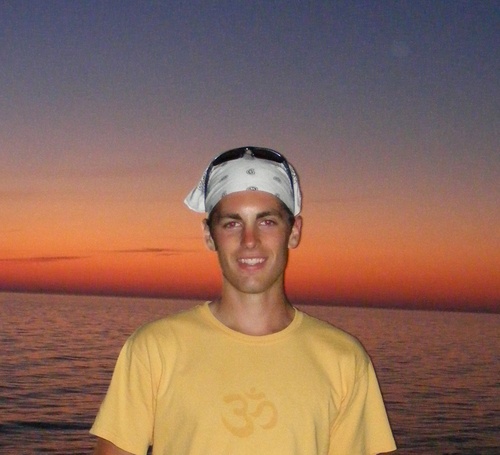
My 2014 link success story centers on a content marketing piece that I launched for my Traverse City, Michigan-based SEO consulting website. The in-depth article, titled “The Traverse City SEO Guide for 2015,” focused on offering actionable tips and strategies to better embrace local SEO in 2015.
After publishing the post on my blog, sharing it around various social media platforms and communities, and building a few links to the post, I was able to get some valuable interaction and engagement from local business owners in Traverse City. In addition to generating a couple solid leads, The Traverse City SEO Guide for 2015 earned a nice ranking for the site’s primary keyword target “Traverse City SEO.” My link success store underscores the SEO value of implementing solid content strategies coupled with social media – two elements that will be vital for SEO’s in 2015. You can jump on my bandwagon by connecting with me and my SEO consulting business on Google+.
It would be my pleasure to share with you one of the most interesting ways in which I built a link in the past year, 2014. While undertaking a broken links research within a client’s niche in order to find some possible prospects, I found a blog post which was supposed to contain an embedded infographic; however, the image in itself was not displayed. I probed further to discover that the reason was because the url of the image source was no longer live; same as the page which was linked as the source. As a matter of fact, I discovered that the whole domain was expired.
I was curious to find out if there were some other inbound links pointing exactly to the page which was listed as the source of the infographic and it turned out that there were a few more backlinks! I registered the domain immediately. Next, I created a new infographic with the same title and then put it on the same url as the “old one” on which it was initially hosted. Thanks to that, the image could be displayed again where it was originally embedded. Then, we also published the infographic on the client’s website, and redirected the page of the previously expired domain which was listed as the source to the client’s page containing the infographic. All in all, it was truly a successful discovery; albeit, it required a bit of work and figuring out how to rebuild the links.
This year our digital asset program saw some great successes. We focused on creating infographics, quizzes and other highly sharable versions of content that allowed us to capitalize on people’s growing desire to discover and share new content on a daily basis.
The urge to share content has extended far beyond deeply committed communities like Reddit thanks to social networks like Facebook and Twitter. Major sites like AOl, Inc and Huffington Post (places where our digital assets have gotten links this year) have also grown beyond news outlets to become platforms for all kinds of content from education to entertainment. This growth provides opportunities for all of us to contribute.
Any website with a unique insight has the chance to become more visible by creating content with popular, broad-based appeal. Taking advantage of that opportunity only requires that we open our minds beyond our immediate business goals. An infographic that supports sales, may not necessarily speak with a voice that resonates socially. The trick is to create diversity with the kinds of content you create, and to define appropriate goals for each kind of content. With digital assets, connecting with people’s interests and passions seems to be the key to leveraging those creations for ultimate brand exposure.
The biggest launch success I had in 2014 was a list based post that featured all of my best content. More specially the post talked about how you can learn everything you need to when it comes to Internet marketing by reading the resources I linked to. What I found is that it not only drove thousands of visitors to all of my content, but it resulted in an extra 147 links. All from a blog post that took me less than an hour to write.
Here is a link to the list based post: https://www.quicksprout.com/2014/09/22/get-your-mba-in-internet-marketing-with-these-12-guides-and-2-courses/
The coolest link-building success story of the past year was when I was doing a backlinks competitive analysis. I came across a very authoritative niche web property/link target and after the initial outreach attempt, it turned out that the site owner was a disgruntled affiliate. After opening up some dialogue it turned out that there had been a miscommunication of how our program worked. We ended up clearing the air and were able to get not only 1 but 2 different high authority links from a site owner who was an authority in her niche. This resulted in us conducting an in-depth interview that gave her exposure on our site. In the end, someone who started out as a disgruntled affiliate turned out to be a raving fan of ours.
The lesson here is to never underestimate the value of a good competitor backlink analysis and that a little communication goes a long way.























